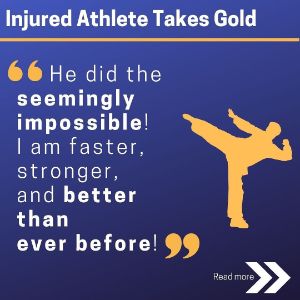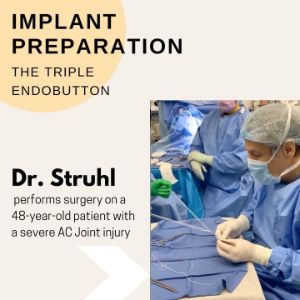The shoulder is a remarkably intricate structure composed of four distinct joints, with the acromioclavicular (AC) joint being one of the key components. This joint plays a crucial role in shoulder movement, providing stability and support during various activities. When injuries occur, particularly to the AC joint, it is essential to seek care from a specialist who has extensive experience and expertise in treating shoulder injuries, such as Dr. Steven Struhl.
Mechanics of the Shoulder
The shoulder is made up of the glenohumeral joint, the AC joint, the sternoclavicular joint, and the scapulothoracic joint. Together, these joints allow for a remarkable range of motion, making the shoulder one of the most mobile joints in the human body. The AC joint specifically connects the acromion of the scapula to the clavicle, serving as a pivotal junction that allows your arm to move freely. The stability of this joint is maintained by ligaments, tendons and surrounding muscles.
However, this complexity also makes the shoulder susceptible to various injuries, particularly in athletes or individuals who engage in activities that require overhead movement. Among these injuries, AC joint separations are common and can significantly impact one’s ability to perform daily activities or engage in sports.
How Often Does an AC Joint Separation Injury Occur?
The Clinical Orthopaedics and Related Research® journal, vol. 475,1, provides the following statistics:
- Acromioclavicular (AC) joint separation is a common shoulder injury, representing up to 9% of all shoulder injuries.
- The majority of AC injuries (44%) occur in people in their twenties and are five times more common in men than in women.
- They are especially numerous in younger patients participating in contact sports and represent 15%, 20% and 41% of shoulder injuries in hockey, skiing and American football, respectively.
Types of AC Joint Injuries
AC joint injuries can be classified into several types, ranging from mild to severe. The Rockwood classification (1998) is the most commonly used (c.2025) classification system for acromioclavicular joint injuries.
- Type I: This injury involves a minor sprain of the AC ligament without any displacement of the joint. The injury may cause some discomfort, but it usually heals well without intervention.
- Type II: This type represents a more significant injury where the AC ligament is torn, leading to a slight separation of the clavicle from the acromion. Patients experience pain and some functional impairment, but surgical intervention is often unnecessary.
- Type III: A complete tear of both the AC and coracoclavicular ligaments occurs in this case, resulting in a noticeable displacement of the clavicle. This type may require surgical intervention, especially for individuals engaged in demanding physical activities.
- Type IV: Similar to Type III, but with more severe displacement, where the clavicle gets pushed backward into the trapezius muscle. Surgery is typically indicated for this injury due to the more complex nature of the damage.
- Types V and VI: These are rarer types characterized by more severe dislocation and soft tissue injuries. Surgery is almost always necessary for these injuries.
Treatment Options
Treatment options for AC joint injuries depend on the type and severity of the injury. Here is a brief overview:
- Non-Surgical Treatment: For Type I and II injuries, Dr. Struhl often recommends non-invasive treatments, including rest, ice therapy, anti-inflammatory medications and physical therapy. This conservative approach allows most patients to heal naturally and regain function.
- Surgical Treatment: For Type III and higher injuries, surgical options may be considered. Dr. Struhl is recognized for his minimally invasive AC joint surgery, which has gained national and international acclaim. This patented method enables the precise repair of torn ligaments, significantly improving recovery time and outcomes.
- Rehabilitation: Post-treatment rehabilitation is essential for regaining strength and mobility in the shoulder. Patients typically work with physical therapists to gradually increase their range of motion and strength, after which they can safely return to their normal activities.
FAQs About AC Joint Injuries
What causes AC joint separation?
AC joint separations usually occur due to a fall onto the shoulder or an impact to the shoulder, especially in contact sports.
How can I tell if I have an AC joint injury?
Symptoms include pain on the top of the shoulder, swelling, bruising and a possible bump at the clavicle. A notable deformity in the shoulder area characterizes severe injuries.
How long does it take to recover from an AC joint injury?
Recovery times vary depending on the severity of the injury. Minor injuries may heal in a few weeks, while more severe injuries can take several months and often involve physical therapy.
Can I return to sports after an AC joint injury?
Yes, but it is crucial to follow a structured rehabilitation program. Dr. Struhl provides a comprehensive approach tailored to each individual to ensure a safe return to activity.
Are there any long-term effects of an AC joint injury?
Some patients may experience chronic pain or arthritis in the joint, particularly with more severe injuries. However, many individuals can return to their normal activities without long-term complications if they receive proper treatment.
NY AC Joint Separation Orthopedic Surgeon
Understanding the functions of the AC joint and the potential for injury can help individuals seeking treatment make informed decisions about their options. Renowned orthopedic surgeon Dr. Steven Struhl is dedicated to delivering personalized and effective care for individuals affected by AC joint injuries at his clinics in New York City and Westchester.
Posted on behalf of Steven Struhl MD





